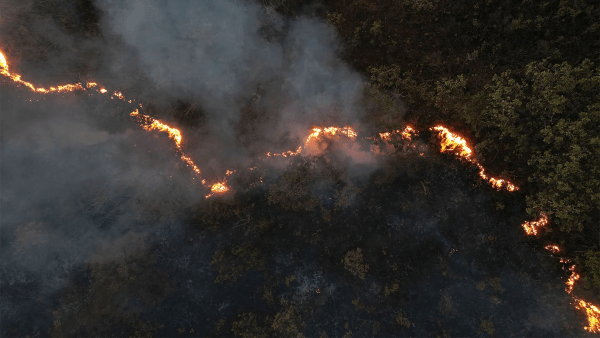Pulling the Global Fire Alarm
UMD’s Unique Forest-Monitoring Capabilities Revealed an Alarming Wildfire Spike
The world’s forests fell at a record pace in 2024, with the oldest ones in tropical areas suffering the heaviest blows from a massive surge in fires, according to a report released in May 2025 by the World Resources Institute (WRI) and based on satellite data analysis from a University of Maryland lab.
Old-growth, or “tropical primary” forests—delicate ecosystems dense with life—were destroyed last year at a rate equal to 18 soccer fields a minute, consuming an area nearly the size of Panama, the report showed. Cold, primarily coniferous boreal forests of Alaska, Canada, Russia and elsewhere were also hit hard.
“It was the first year we saw it simultaneously—the south and the north burning so strongly at the same time,” said geographer Peter Potapov, a research scientist in UMD’s Department of Geographical Sciences involved with the report.
Maryland Today's Chris Carroll sat down with Potapov and geographical sciences Professor Matthew Hansen, who together lead UMD’s Global Land Analysis and Discovery (GLAD) Lab, to explain why the world seems to be burning, UMD’s vital contribution to monitoring global conditions and what it would take to save the trees.
Published on Tue, May 27, 2025 - 10:18AM




